What Does the Tap Symbol Mean in Magic Gathering?
The tap symbol (♢) in Magic: The Gathering is a vital mechanic introduced by Richard Garfield to streamline gameplay and enhance strategic depth. It represents turning a card sideways to indicate it can no longer be used until it is untapped.
This mechanism is important for mana generation, activating abilities, and determining combat dynamics. Tapping adds a layer of tactical decision-making, balancing offense and defense, as well as resource management.
Understanding its full strategic importance can have a significant impact on match outcomes. Interested in mastering this fundamental aspect of gameplay? There's more to discover about using the tap symbol effectively.

Key Takeaways
- The tap symbol represents turning a card sideways to indicate its use.
- Tapping lands generates mana, essential for casting spells and abilities.
- Tapped creatures cannot block and are often used for attacking.
- The tap symbol adds strategic depth, balancing offense and defense.
- Untapping resets cards, crucial for maintaining game balance and strategy.
The Origin of Tap Symbol
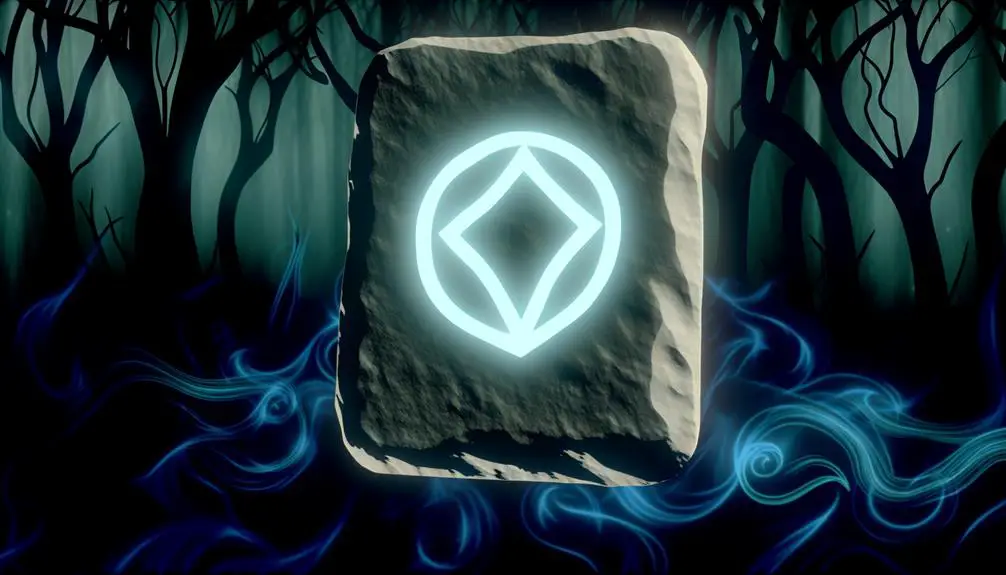
The Tap symbol, a cornerstone of Magic: The Gathering gameplay, originated in the game's early development as a simple yet revolutionary mechanic to indicate the usage of a card. Conceived by Richard Garfield, the creator of Magic: The Gathering, the Tap symbol elegantly streamlined gameplay by offering an intuitive means to signify that a card's abilities or resources had been activated.
This mechanic introduced strategic depth, as players had to carefully consider when to utilize their cards' powers, balancing immediate benefits with long-term strategy. The Tap mechanic's brilliance lay in its simplicity, fostering an engaging and dynamic play experience. Its introduction marked a pivotal evolution in trading card games, establishing a standard that has been emulated across numerous other games.
Visual Representation
The visual representation of the tap symbol in Magic: The Gathering has seen intriguing evolution since its inception. Initially a simple design, it has undergone refinements to enhance clarity and aesthetic appeal, ensuring players easily recognize its function during gameplay.
This evolution not only reflects artistic trends but also supports the symbol's essential role in facilitating swift and seamless in-game actions.
Symbol Design Evolution
Throughout the years, the tap symbol in Magic the Gathering has undergone several design adaptations, each reflecting the evolving aesthetics and functional needs of the game.
Initially, the tap symbol was depicted as a simple 'T' to signify the action of tapping a card. As the game expanded, the symbol evolved to a circular arrow, providing a more intuitive visual cue.
Key design alterations include:
- 1993: The original 'T' symbol introduced with the game's release.
- 1997: Shift to a curved arrow, enhancing clarity and visual appeal.
- 2008: Refinement of the arrow's design to a sleeker, more modern look.
These changes have not only improved the symbol's recognizability but have also upheld its consistency with the game's overall design philosophy.
In-Game Symbol Usage
How does the tap symbol integrate into gameplay, serving not only as a functional element but also as an essential aspect of Magic the Gathering's visual language?
In Magic the Gathering, the tap symbol (a turning arrow) is pivotal, indicating when a player uses a card's ability or resource. This simple yet powerful symbol enhances visual clarity, enabling players to quickly grasp the game state.
The tap symbol's consistent use across various card types and abilities guarantees a seamless experience, fostering intuitive play and strategic depth. Its universal recognition among players underscores its role as a cornerstone of Magic's intricate design, making it indispensable for both novices and veterans in the immersive world of Magic the Gathering.
Basic Mechanics

Understanding the basic mechanics of Magic: The Gathering is essential for mastering the game's strategic depth and complexity. By grasping these foundational elements, players can enhance their gameplay and make informed decisions during matches.
Key mechanics include:
- Turn Structure: Each turn consists of distinct phases such as the upkeep, draw, main, combat, and end phases, where specific actions are taken.
- Card Types: Players must familiarize themselves with various card types like creatures, enchantments, artifacts, and planeswalkers, each serving unique purposes.
- Tapping: The tap symbol (⤵) indicates the action of turning a card sideways to show it has been used, often to activate abilities or attack.
These mechanics form the bedrock of gameplay, enabling players to craft intricate strategies and enjoy the full depth of Magic: The Gathering.
Mana Generation
Mana generation is a fundamental aspect of Magic the Gathering, driven primarily by tapping lands to produce either colorless or colored mana.
Each land type corresponds to a specific color of mana, essential for casting spells and activating abilities.
Understanding the strategic nuances between colorless and colored mana can greatly impact gameplay, offering players a deeper appreciation of resource management.
Tapping Land for Mana
In Magic the Gathering, the process of tapping land to generate mana is fundamental to casting spells and summoning creatures, serving as the cornerstone of gameplay strategy. Each land card can be tapped to produce a specific type of mana, which is then used to pay the costs associated with various cards.
This mechanic is not only important for resource management but also for strategic planning and deck building.
Key points about tapping land for mana include:
- Efficiency: Properly managing and tapping land ensures you have the necessary mana to execute your strategies.
- Timing: Knowing when to tap lands can prevent wasting resources and enable timely plays.
- Synergy: Combining different lands and their mana types can enable powerful combinations and enhance your deck's performance.
Understanding these elements is essential for mastering Magic the Gathering.
Colorless Vs. Colored Mana
While tapping land for mana is a fundamental aspect of gameplay, differentiating between colorless and colored mana adds another layer of complexity and strategy to Magic the Gathering.
Colored mana, derived from the five basic land types—Plains, Island, Swamp, Mountain, and Forest—corresponds to the five colors of magic, each with unique spells and abilities.
Colorless mana, on the other hand, comes from sources like Wastes or artifacts and can be used to pay for generic mana costs or specific colorless requirements.
Mastering the balance between these mana types is essential; colored mana enables diverse spellcasting options, while colorless mana often powers versatile, cost-effective cards.
This duality enriches gameplay, challenging players to build efficient, synergistic decks.
Activating Abilities
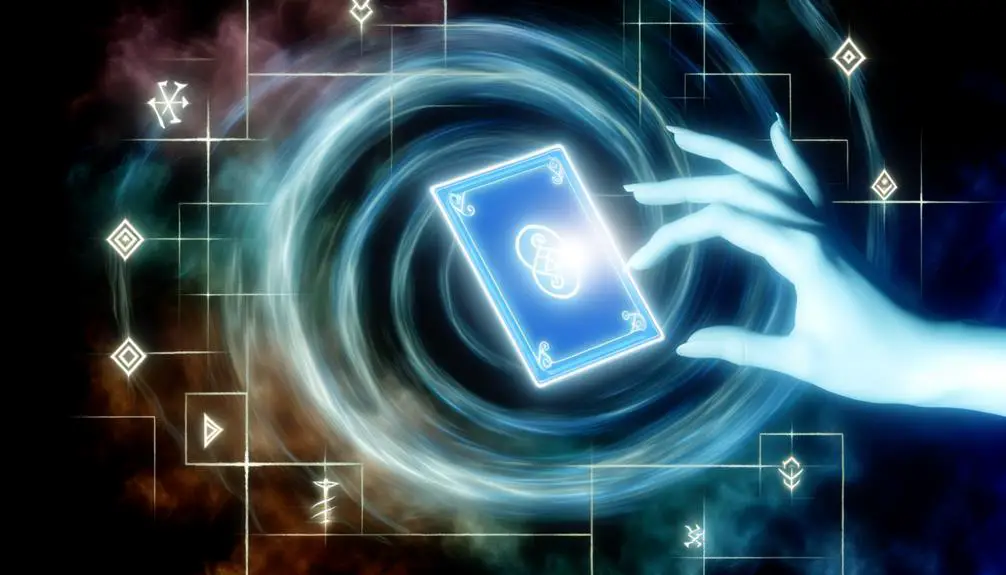
Activating abilities in Magic: The Gathering often requires players to utilize the tap symbol, demonstrating a strategic element that adds depth and complexity to the game. By tapping a card, players can release powerful effects that can alter the course of a match. These abilities can range from drawing extra cards to dealing damage to opponents.
Key points to keep in mind include:
- Cost: Many abilities require both mana and tapping the card, balancing power with resource management.
- Timing: Abilities can often be activated at instant speed, offering flexibility and surprise.
- Restrictions: Some cards can only be tapped under specific conditions, adding layers of tactical decision-making.
Understanding these elements is vital for mastering the strategic intricacies of Magic: The Gathering.
Combat and Tapping
Combat in Magic the Gathering introduces critical interactions involving the tap symbol.
Tapping creatures to declare attacks, managing blockers while considering untapping mechanics, and formulating effective combat phase strategies are all pivotal elements in mastering the battlefield.
Understanding these aspects not only enhances gameplay but also elevates your strategic prowess.
Tapping for Attack
In Magic: The Gathering, tapping a creature to attack is a fundamental mechanic that signifies its engagement in combat and its temporary readiness to be used for offense. This action not only symbolizes the creature's active participation in the battle but also indicates that it can no longer block until it is untapped.
Understanding this mechanic is essential for strategic gameplay.
Key points to remember:
- Attack Declaration: Players declare which creatures will attack by turning them sideways, indicating they are tapped.
- Combat Phase Dynamics: Tapped creatures contribute their power to the attack, aiming to reduce the opponent's life total or defeat other creatures.
- Resource Management: Tapping for attack requires balancing offensive potential with defensive needs, as tapped creatures are vulnerable.
Mastering this mechanic enhances gameplay strategy and effectiveness.
Blocking and Untapping
Understanding the intricacies of blocking and untapping is essential for mastering the defensive aspects of Magic: The Gathering's combat phase. When a creature blocks, it becomes tapped, rendering it unavailable for other actions until it untaps during the next untap step. This careful management of tapped and untapped states can strongly influence the outcome of a game. To better understand the nuances, consider the following table illustrating key differences:
| Action | Result |
|---|---|
| Block | Creature becomes tapped |
| Untap Step | All tapped creatures controlled by a player untap |
| Tap to Block | Creature is temporarily unavailable for other tasks |
| Untapped | Creature is ready for blocking and activation |
Navigating these mechanics effectively enhances your defensive strategies.
Combat Phase Strategy
Mastering the interplay of combat and tapping mechanics is crucial for executing effective offensive and defensive strategies in Magic: The Gathering. During the combat phase, understanding when to tap creatures can make the difference between victory and defeat.
Tapping a creature to attack can apply pressure on your opponent, but careful consideration is needed to guarantee you maintain a robust defense.
Key strategies include:
- Aggressive Tapping: Utilize creatures with high power to maximize damage output.
- Defensive Untapping: Employ abilities or spells that untap creatures to surprise block incoming attacks.
- Combat Tricks: Leverage instants and abilities that tap or untap creatures to gain an unexpected advantage.
Strategic Importance
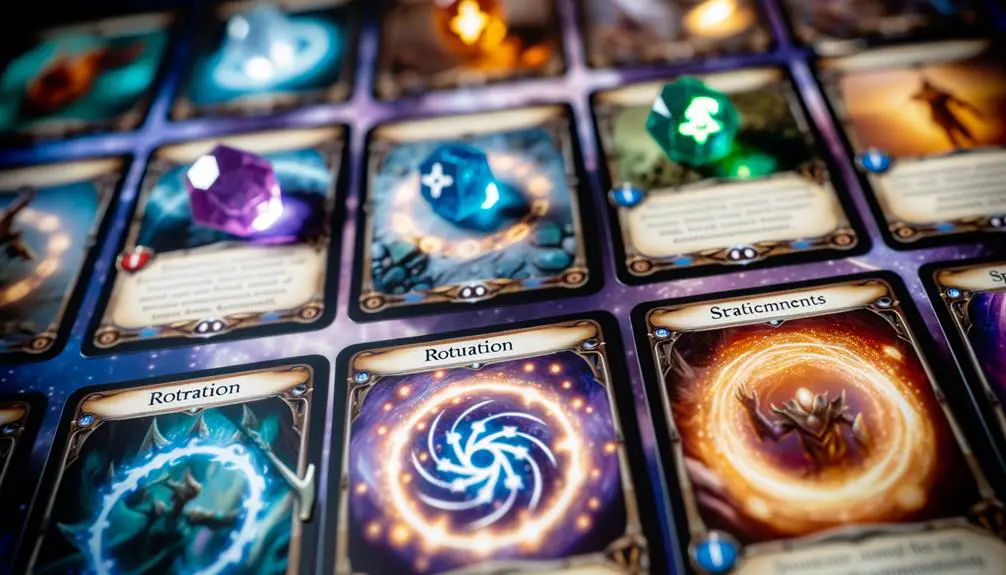
The tap symbol in Magic the Gathering frequently plays a vital role in dictating the flow of gameplay and resource management. This symbol signifies that a card has been utilized for its specific ability, often requiring it to be rotated or 'tapped.'
By strategically tapping cards, players can activate powerful effects, summon creatures, or generate mana, which is essential for casting spells. Effective use of the tap symbol allows players to optimize their resources, timing their actions to maintain control over the battlefield.
Mastery of tapping mechanics can turn the tide in any duel, enabling the execution of complex strategies and countermeasures. Understanding when and how to tap is important for any player aiming to excel in Magic the Gathering.
Common Misconceptions
Many players mistakenly believe that tapping a card renders it completely unusable for the remainder of the turn, overlooking the potential for untapping effects and additional strategic maneuvers. This misconception can limit strategic depth and diminish the enjoyment of gameplay. Understanding the nuances of the tap symbol can lead to more dynamic and effective play.
Key misconceptions include:
- Tapping Exhausts a Card's Potential: Many cards have abilities that can untap them, allowing for additional use within the same turn.
- Tapped Creatures Can't Block: While true, some abilities can untap creatures in time for them to defend.
- Tapped Artifacts and Enchantments Are Inert: Many still provide passive benefits or can be untapped for further activation.
Rules and Regulations
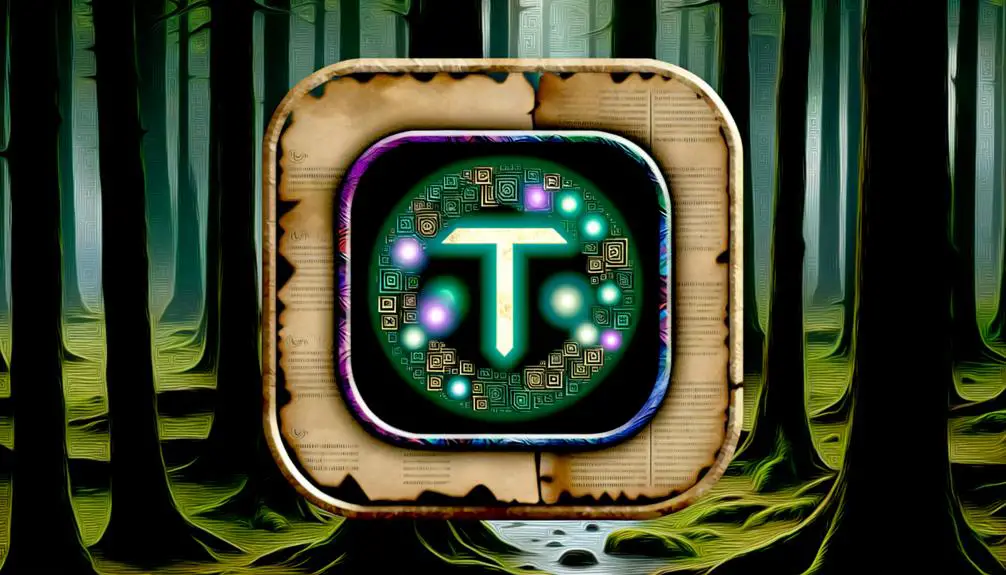
Understanding the rules and regulations surrounding the tap symbol is essential for maximizing strategic opportunities in Magic the Gathering.
The tap symbol, represented as 'T,' indicates that a card must be turned sideways to activate its ability, signifying that it has been used. Players can only tap cards they control, and tapping is typically restricted to once per turn per card unless otherwise stated.
Moreover, summoning sickness rules restrict newly summoned creatures from tapping for abilities requiring the tap symbol until they have been under your control since the beginning of your most recent turn.
Comprehending these nuances ensures that players can effectively manage resources, execute strategies efficiently, and avoid common pitfalls that could otherwise compromise their gameplay experience.
Advanced Tactics
Integrating advanced tactics involving the tap symbol can elevate your gameplay by leveraging timing, synergy, and resource management to outmaneuver opponents. Mastering the intricacies of tapping can provide meaningful strategic advantages.
For example, knowing when to tap creatures or lands at the end of your opponent's turn can set you up for powerful plays during your own turn. Additionally, combining tap abilities with untap effects can create a dynamic and flexible battlefield presence.
Timing: Tap lands or creatures at ideal moments to disrupt your opponent's strategy.
Synergy: Use cards that untap other permanents to maximize resource utilization.
Resource Management: Efficiently manage your mana pool by tapping and untapping lands and artifacts, ensuring you always have resources available.
These tactics can greatly enhance your strategic depth.
Future of Tap Symbol
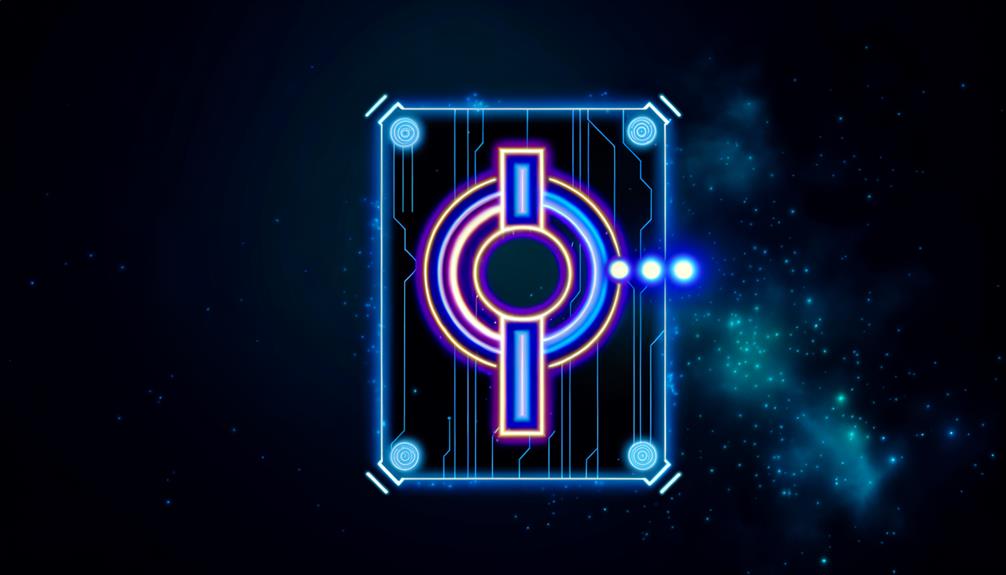
As Magic: The Gathering continues to evolve, the tap symbol remains a cornerstone mechanic, with innovative design space promising to further enrich gameplay complexity and strategic possibilities.
Future expansions may introduce cards that redefine how tapping functions, perhaps allowing players to gain additional resources or activate unique abilities when tapping specific card types. Designers could explore hybrid tap mechanics, integrating other symbols to create new layers of strategy.
Additionally, digital adaptations of Magic might leverage the tap mechanic in novel ways, incorporating real-time elements or alternate formats. As the game continues to innovate, maintaining the tap symbol's relevance will likely involve balancing tradition with creative evolution, ensuring it remains integral to the rich tapestry of Magic: The Gathering.
Conclusion
In the grand tapestry of Magic: The Gathering, the tap symbol stands as a linchpin, weaving together the game's intricate mechanics and strategic depth. Its origins, visual representation, and multifaceted uses—ranging from mana generation to activating abilities—form the bedrock of gameplay.
Despite common misconceptions, adherence to rules guarantees fair play. As players explore advanced tactics, the tap symbol's role will unquestionably evolve, cementing its place as an eternal cornerstone of the game.






